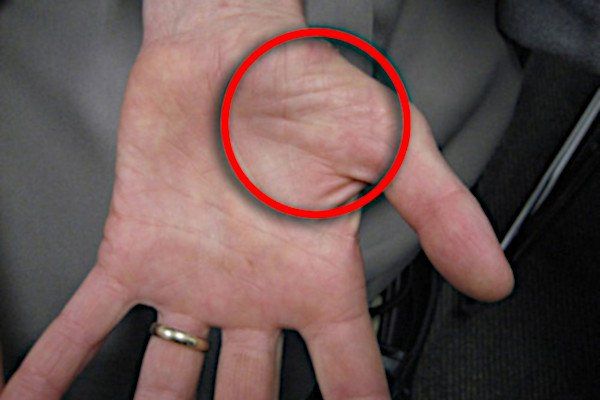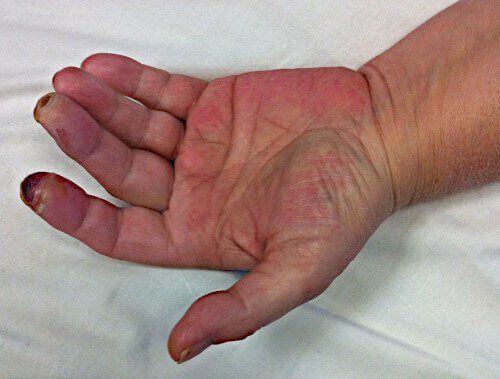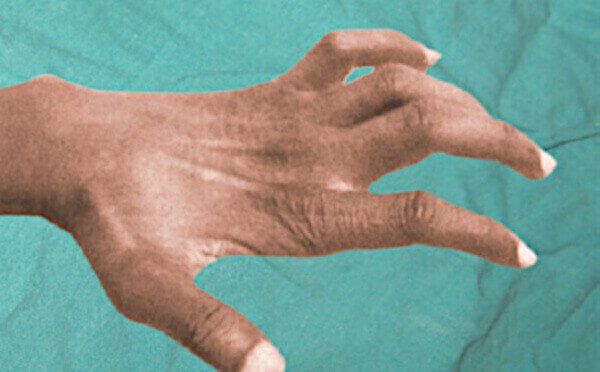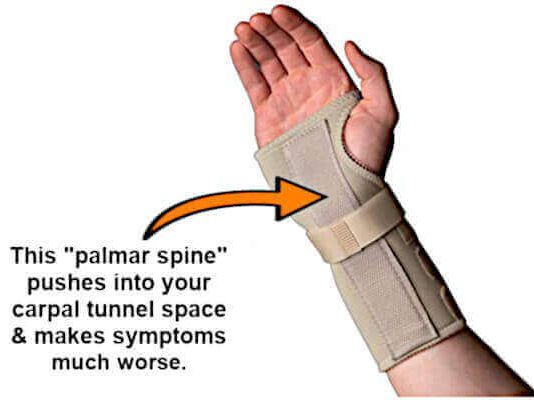Severe Carpal Tunnel Syndrome: Symptoms, Causes & Treatment Options
By Dr. M. Zannakis | The CarpalRx
Severe carpal tunnel syndrome causes constant numbness, pain, and weakness in the fingers and hand due to prolonged pressure on the median nerve. At this stage, muscles may weaken and daily tasks become difficult. Learn how to recognize severe CTS, treatment options, and ways to prevent permanent nerve damage.
Table of Contents
- Overview
- What causes severe carpal tunnel syndrome?
- How does carpal tunnel start?
- Who gets it
- What carpal tunnel syndrome feels like
- Symptoms as the moderate stage progresses
- Signs that severe carpal tunnel syndrome is starting
- What is "advanced severe" carpal tunnel syndrome?
- How to treat severe carpal tunnel syndrome
- Carpal tunnel release surgery
- Nonsurgical remedies
- Brace
- Rest
- Stretching exercises
- Massage
- Summary
- FAQs
- About
Overview
There’s a big difference between
mild, moderate, and severe carpal tunnel syndrome—and understanding that difference can help you get the right treatment before it’s too late. If you’re struggling with
pain,
numbness or
electric shock-like sensations in your hand or fingers, you know how disruptive they can be—especially when they wake you up at night.
But these frustrating symptoms alone don’t always mean your condition is severe. In medical terms, severe carpal tunnel syndrome is when nerve compression becomes so advanced that symptoms are constant and begin to affect nearly every part of daily life.
That means:
- Pain and numbness never fully go away.
- Hand strength and finger dexterity are noticeably reduced.
- It’s difficult to sense
temperature changes, grip objects, or perform fine movements.
If any of this sounds familiar, it’s time to take action. Don’t wait until your carpal tunnel becomes severe. Early treatment—like gentle myofascial release with the
CarpalRx device—can stop the progression and help you regain comfort, strength, and a good night’s sleep.
What causes severe carpal tunnel syndrome?
Carpal tunnel syndrome is caused when the
median nerve inside your wrist joint is compressed and ultimately crushed. The compression happens because deep inside the wrist joint, tendons and other nearby tissues
thicken and inflame.
Nobody is certain why the inflammation happens in some people but not in others. Scientists believe it may have something to do with how you physically use your hands.
Repetitive stress injury is therefore one factor that's investigated a great deal. The stress can be caused by a number of activities that are harmful to your hands.
Certain professions are infamous for having carpal tunnel syndrome. The most notable of these occupations include
hairdressers,
dental hygienists,
guitar players, fine artists,
knitters,
graphic designers, and
transcriptionists. Obviously, these and
other professionals use their hands a lot and in different ways. But not everybody in these occupations gets this condition.
Carpal tunnel syndrome also appears to have a
genetic basis. If a close family member has (or had) carpal tunnel syndrome, then you're likely to get it as well. Once again, nobody is certain why.
Whatever brings on carpal tunnel syndrome, the result is the same. Tendons inside the wrist joint inflame, fill with fluid, and then swell. These swollen tendons contain so much fluid pressure that they push out against the adjacent median nerve.
The build-up of pressure compresses the nerve more and more each day. Eventually, the compression is so great that the median nerve is completely crushed.
This nerve compression causes various intensities of pain or numbness as the nerve gets crushed further and further. The resulting sensations are different from one person to the next. In fact, no two people have the exact same
carpal tunnel symptoms.
How does carpal tunnel start?
Who gets it
Anybody can get carpal tunnel syndrome. Medical science is still unclear why some people get it when others do not.
What is known is there are certain
risk factors associated with this condition. That means your probability of getting carpal tunnel syndrome is greater when you:
What carpal tunnel syndrome feels like
What carpal tunnel syndrome feels like from one person to the next is always a bit different. But symptoms usually follow a distinct pattern.
Most times, symptoms of carpal tunnel syndrome start out
gradually. Actually, most people don't even notice them in the beginning. For example, you may sense unusual feelings in your hand or fingers like tingling,
numbness,
burning or itching. Any of these
can happen in any finger except the little finger (pinky finger). They're often more intense in the thumb and index fingers.
You might pass off these feelings as “over-tired hands”. You might think you just aggravated something or over-stressed your hands while doing simple tasks. That could be the case.
But it also might be the beginning of mild stage
carpal tunnel syndrome. Neglecting these warning signs can be risky.
A big problem with mild carpal tunnel syndrome is that you don't feel the symptoms while working your hands. Instead, symptoms most often appear only when your hand is
resting , like when you're trying to sleep. That makes you think it's not such a big deal.
In fact, the beginning (onset) symptoms seem more like an inconvenience while you're trying to sleep. Oftentimes, patients have to wake up to shake out their numb hands. Or sometimes pain will wake them up from a dead sleep. This stage usually lasts only a couple months.
Then it progresses even further.
Symptoms as the moderate stage approaches
If you do nothing to treat the signs of mild stage carpal tunnel syndrome, chances are good it will progress. That's when you enter the
moderate stage of carpal tunnel syndrome.
As the median nerve gets crushed even further, symptoms escalate. Patients feel the same symptoms as before, but now they're much more intense and constant. For instance, one of the most common new complaints is
loss of grip strength. Such hand weakness is usually accompanied by
dexterity problems.
The other common symptoms people experience in the moderate stage are
more intense:
Sometimes
brand new symptoms can appear in the moderate stage.
For example, some people may only have numbness when the condition starts out. Then the numbness worsens a lot more in the moderate stage.
You may have either finger dexterity problems, hand clumsiness or hand weakness. But usually patients have a combination of all three of these issues.
As carpal tunnel syndrome gets more severe, And patients may also feel a complete loss of finger dexterity.
As the condition advances through the moderate stage, pain may also enter the picture in you didn't have it to begin with. But this isn't a rule.
Also, symptoms will also appear
during the day . Most times they worsen while performing relatively innocent hand activities. Some of the more common hand activities where carpal tunnel seems to worsen are:
- Using tools or utensils
- Using a mouse or
keyboard
- Holding a steering wheel
- Knitting or sewing
- Playing
video games
- Holding a phone
- Turning a doorknob
- Washing dishes
- Lifting a baby
- Playing sports
- Playing a
guitar or piano
Some people report their fingers feel swollen or puffy, even though they’re not.
At times patients feel these sensations in both hands simultaneously. This is called
bilateral carpal tunnel syndrome, and it occurs in over 80% of patients.
The moderate stage of carpal tunnel syndrome can last for several months. Once your hands get to the moderate stage, the statistics are not in your favor. Without intervention, and in the coming weeks, over 90% of patients see symptoms intensify even more. This isn't the time to ignore those symptoms.
Signs that severe carpal tunnel syndrome is starting
As the condition progresses past the moderate stage, you enter the stage of severe carpal tunnel syndrome. This is when symptoms get so bad that patients usually seek professional help.
Patients with severe symptoms often describe their sensations as "extreme".
The symptoms are so intense and all-consuming that they interfere with every aspect of life. Doctors often hear patients say...
"It's so bad I want to cut my hand off!"
By now, finger or hand pain, numbness, tingling, weakness and burning are constant. There's no time interval when symptoms are not there. In other words, there's
no rest or relief from them. You can't even sleep without these symptoms constantly waking you up several times a night.
Patients often look back to a time when symptoms were merely annoying or bothersome. Now they're making work, sleep, play, and rest miserable or even impossible.
Also with severe carpal tunnel syndrome, it's common for patients to feel symptoms either radiate or "shoot" up the arm. Usually, it's the pain symptom that does this. And it might feel like
shooting electric shocks. The forearm may even feel tender almost up to the elbow. In rarer cases, pain or tenderness can travel past the elbow, up the arm, and into the shoulder.
In the severe stage, most patients have catastrophic loss of finger dexterity and grip strength. They tend to drop things like drinking glasses or beverage bottles. Many find it
impossible to perform simple tasks like opening a jar, picking up coins, buttoning a shirt, tying shoelaces or writing with a pen. Having the strength to turn a doorknob or open a car door is practically lost.
Personal grooming, washing, toileting, hygiene, and dressing becomes a real chore. Folding clothes or linens is next to impossible. Many parents must give up lifting their infant for fear of dropping the child.
This is the very definition of severe carpal tunnel syndrome because it definitely
"interferes with your life".
Believe it or not, it can get even worse. This is "advanced severe carpal tunnel syndrome".
What is "advanced severe" carpal tunnel syndrome?
Just when you thought carpal tunnel couldn't get any worse, it does. Doctors call this
advanced severe carpal tunnel syndrome. Some doctors more ominously call it
end-stage
carpal tunnel syndrome. This means, because there was no intervention, the condition progressed to its final, natural, inevitable, and incurable conclusion.
Up until this point (during the severe stage), patients had the opportunity
to do something in order to halt carpal tunnel's progression. It was even possible to
reverse most of carpal tunnel's symptoms and restore their hand. That's because some parts of the median nerve were still alive and active during the severe stage.
But once patients reach the advanced severe stage, the problem is usually not salvageable, much less reversible.
Carpal tunnel doctors usually will not perform surgery at this point due to the high failure rate.
Surgeons also call this the
hypo-atrophy
stage, and for good reason. That's because there's significant
muscle wasting at the base of the patient's thumb. It means there's no saving the thumb's muscle now.
That muscle is normally the thick bump between the wrist and thumb. When it wastes away, you can actually see the muscle has flattened out and became wrinkly. It signifies that most of the median nerve has died. As a result, the muscle it connects to (the thumb) no longer gets motor commands. As a result, the muscle degenerates and dies as well.
One of the most dangerous consequences of advanced severe carpal tunnel syndrome is losing the sensation of hot and cold. It's very common for patients to scald themselves with boiling water. Also, they often have severe burns from working on a hot stove. Many victims say they didn't notice a problem until they smelled burning flesh.
Finally, useful hand and finger function is nearly gone at this late stage of the disorder. The fingers are unable to hold or pinch anything. They're in a constant "curled" state. This is called "claw hand" because of the claw-like deformity that results from severe carpal tunnel syndrome.
A sad but ironic phenomenon about severe advanced carpal tunnel syndrome is that pain symptoms may actually
diminish. While numbness remains a crushing problem, patients generally feel better because there's finally some relief from pain's misery. But this is not a good thing. It means the median nerve is essentially dead and your hand doesn't work anymore.
From the standpoint of using your hand, at this point it's nearly a non-functioning appendage. You still might be able to feel things, but this sensory ability is greatly reduced. Unfortunately, hand weakness, loss of dexterity, and temperature insensitivity does improve.
How to treat severe carpal tunnel syndrome
In most cases, even severe carpal tunnel syndrome can be successfully
treated with either
surgery
or
non-surgical methods.
The
best remedies aim to relieve pressure on the median nerve. In most cases, relieving the surrounding fluid pressure can make the nerve plump up, and return to its normal self - or very close to it.
When it comes to the treatment of severe carpal tunnel syndrome in the severe stage, doctors and patients consider 3 main factors.
- How intense the symptoms are
- The length of time you’ve had these symptoms
- The degree to which these symptoms affect your life
You should
never allow symptoms to advance so far that the numbness or pain is ruining your life before you seek treatment. Carpal tunnel syndrome is most difficult to treat at that time. But this unfortunate situation is what happens in many cases.
Remember, severe carpal tunnel syndrome can still be treated, it's just more difficult to get good results. Ideally, you want to
intervene in the mild stage in order to see good results.
Carpal tunnel release surgery
The goal of
carpal tunnel surgery is to de-compress the median nerve. All hand surgeons will advise you that the more advanced or intense your carpal tunnel, the less likelihood surgery will relieve symptoms. In other words,
surgery has a higher failure rate with more severe symptoms.
Carpal tunnel release surgery can be performed using the
endoscopic surgery method or the
open release method. Each method has its
pros and cons, and your doctor will choose which to use. Usually the doctor will specialize in one or the other method.
Whichever surgical method is used, the success rate of carpal tunnel release surgery is proportional to how severe your symptoms are at the time of surgery.
Unfortunately, there are no good statistics to show the association between symptoms severity and surgical success rates. Therefore, ask your surgeon what his/her success rate is relative to having mild, moderate or severe symptoms. (Remember, advanced severe symptoms are usually deemed inoperable.)
Also make sure you ask your doctor for an answer that defines success as
patient satisfaction 3 years after surgery. Why? When combining all levels of severity, the published
success rate of surgery is 50% patient satisfaction at year 3.
Non-surgical remedies
Unlike surgery, there's no downside to trying non-surgical remedies first. Actually, the
American Academy of Orthopedic Surgeons
as well as the
National Institutes of Health
recommend trying all non-surgical therapies before surgery is even discussed.
That's because non-surgical remedies work in the
vast majority of patients. And they work at nearly every stage of
carpal tunnel syndrome. How to treat the condition without surgery is therefore a major goal of doctors and therapists.
The best non-surgical techniques are the combination of Brace, Rest, Exercise, and Massage.
1. Brace
2. Rest
3. Stretching exercises
4. Massage
Summary
Severe carpal tunnel syndrome is the most advanced stage of median nerve compression in the wrist. At this point, symptoms like pain, tingling, numbness, and weakness become constant and interfere with nearly every part of daily life. Hand strength and dexterity decline, and many patients can no longer sense temperature changes in their fingers. Early intervention is key—starting treatment before symptoms become severe greatly improves recovery. Proven non-surgical options, such as
CarpalRx therapy, can relieve pressure on the median nerve and help restore normal hand function without surgery.
FAQs
Which is the biggest indicator you have severe carpal tunnel?
The best indicator of having severe carpal tunnel is loss of strength and dexterity in addition to having pain, numbness and/or tingling.
Does everybody go from mild to moderate to severe to end stage?
While that's the sequence of increasing severity, carpal tunnel syndrome can plateau at any one of those stages. Some people have moderate or severe carpal tunnel for many years.
Is each stage treatable?
Yes, but the more severe it is, the more challenging the treatment -- and the lesser the odds of seeing good remission of symptoms.
About

















